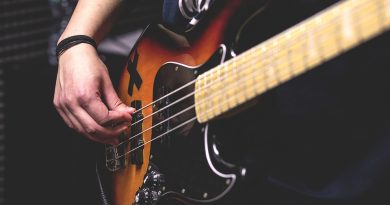Mastering Guitar Finger Independence: A Beginner’s Guide
Mastering Guitar Finger Independence: A Beginner’s Guide
Learning how to play the guitar can be both rewarding and challenging. One of the key skills that every guitarist needs to master is finger independence. This skill allows you to play complex chord progressions, intricate melodies, and fast-paced solos with ease. In this beginner’s guide, we will explore some tips and techniques to help you improve your finger independence on the guitar.
Understanding Finger Independence
Finger independence refers to the ability of each finger on your fretting hand to move independently of the others. This is crucial for playing different notes simultaneously, executing fast runs, and performing complex chord shapes. Developing finger independence will not only improve your dexterity and speed but also enhance your overall playing technique.
Exercises for Building Finger Independence
1. Finger Independence Warm-Up
Start by placing your index finger on the first fret of the high E string, your middle finger on the second fret, your ring finger on the third fret, and your pinky on the fourth fret. Play each fretted note individually, making sure that the other fingers remain in position. Repeat this exercise on all strings, focusing on keeping each finger independent and relaxed.
2. Spider Exercise
The spider exercise is a classic finger independence workout that involves fretting notes in a sequential pattern. Begin with your index finger on the first fret, middle finger on the second fret, ring finger on the third fret, and pinky on the fourth fret. Play each note individually and then reverse the pattern, moving in the opposite direction. This exercise will help strengthen each finger and improve their coordination.
3. Chord Shape Variations
Practice different chord shapes that require each finger to work independently. For example, try playing a D major chord with your index finger on the second fret of the G string, middle finger on the second fret of the high E string, and ring finger on the third fret of the B string. Focus on transitioning smoothly between chords and keeping each finger in the correct position.
Techniques for Improving Finger Independence
1. Slow Practice
When working on finger independence, it’s essential to start slowly and focus on accuracy rather than speed. Play each exercise or chord progression at a comfortable tempo and pay attention to the movement of each finger. Gradually increase the speed as you become more comfortable with the patterns.
2. Use a Metronome
A metronome is a valuable tool for developing finger independence and timing. Set the metronome to a comfortable tempo and practice playing exercises or scales in time with the beat. This will help you improve your rhythm and coordination, as well as build your finger independence.
3. Focus on Relaxation
Tension in your fingers can hinder your ability to move them independently. Make sure to stay relaxed while playing, keeping a light grip on the guitar neck and avoiding unnecessary tension in your hands. Regular stretching exercises can also help improve flexibility and reduce muscle tightness.
4. Finger Strengthening Exercises
In addition to practicing fretting exercises, you can also work on strengthening your fingers with specific exercises. Use a finger strengthener tool or practice squeezing a stress ball to build up the muscles in your fretting hand. Stronger fingers will not only improve your finger independence but also enhance your overall playing technique.
Conclusion
Mastering finger independence on the guitar takes time and dedication, but with consistent practice and the right techniques, you can significantly improve your playing skills. Start by incorporating the exercises and tips outlined in this beginner’s guide into your daily practice routine. Remember to be patient with yourself and focus on progress rather than perfection. With time and effort, you will become a more confident and proficient guitarist with excellent finger independence. Happy playing!






